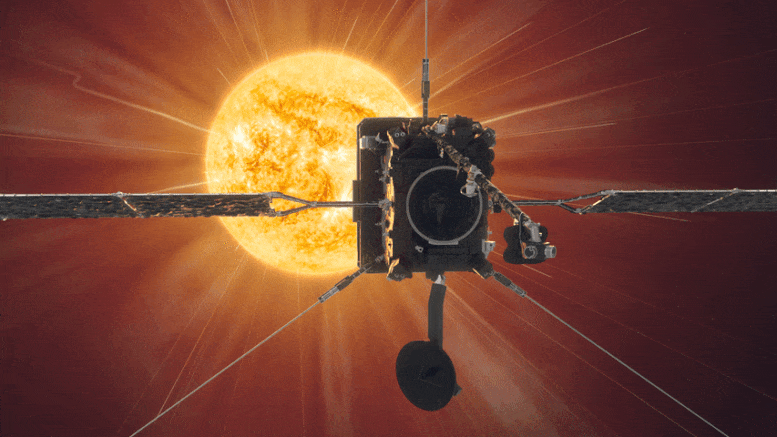
Animație pentru Solar Orbiter al Agenției Spațiale Europene. Credit: ESA/Medialab
Cele mai recente imagini Solar Orbiter arată plinul soare cu detalii fără precedent. A fost făcută pe 7 martie 2022, când nava spațială tranzita direct între Pământ și Soare.
Una dintre imaginile surprinse de Extreme Ultraviolet Imager (EUI) este imaginea cu cea mai înaltă rezoluție a discului soarelui complet și a atmosferei exterioare, corona, realizată vreodată.
O altă imagine realizată de instrumentul Spectral Imaging of the Coronal Environment (SPICE) reprezintă prima imagine completă a Soarelui în ultimii 50 de ani și cea mai bună imagine realizată de-a lungul lungimii de undă beta Lyman a radiației ultraviolete emise de hidrogenul gazos.
Imaginile au fost făcute când orbiterul solar se afla la aproximativ 75 de milioane de kilometri distanță, la jumătatea distanței dintre lumea noastră și steaua mamă. Telescopul de înaltă rezoluție al lui EUI captează imagini cu o rezoluție spațială atât de mare încât, la acea distanță apropiată, este necesar un mozaic de 25 de imagini individuale pentru a acoperi întregul Soare. Luată una câte una, imaginea completă a fost realizată pe o perioadă de peste patru ore, deoarece fiecare piesă durează aproximativ 10 minute, inclusiv timpul necesar navei spațiale pentru a îndrepta de la o parte la alta.
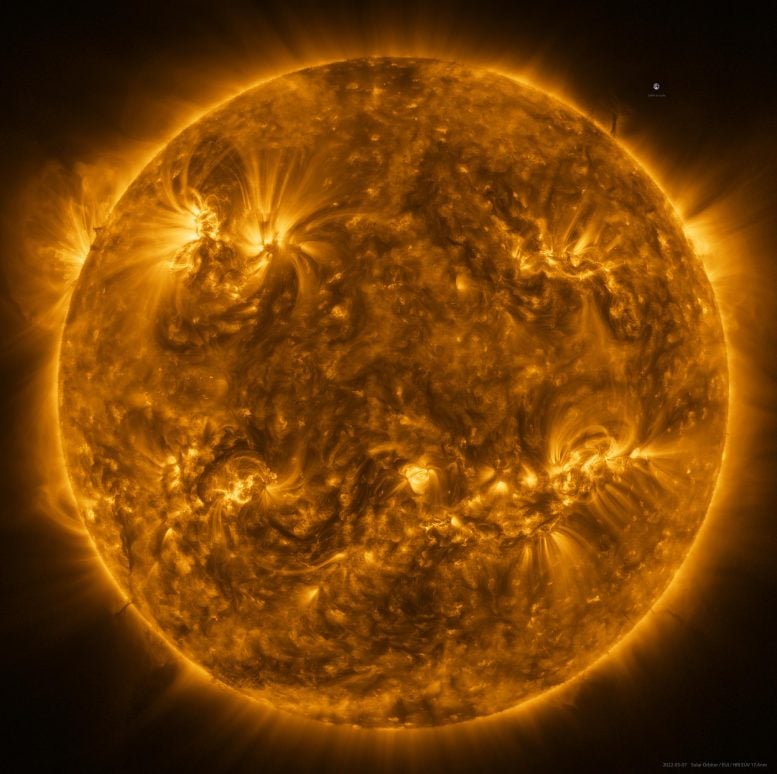
Soarele văzut de Solar Orbiter în lumină ultravioletă extremă de la o distanță de aproximativ 75 milioane km. Imaginea este un mozaic de 25 de imagini individuale realizate pe 7 martie 2022 de Telescopul de înaltă rezoluție Ultraviolet Imaging Instrument (EUI). Această imagine a fost realizată la o lungime de undă de 17 nanometri, în regiunea ultravioletă extremă a spectrului electromagnetic, dezvăluind atmosfera superioară a soarelui, corona, care are o temperatură de aproximativ un milion de grade Celsius. Este, de asemenea, inclusă o imagine Pământului a scalei în poziția de la ora 2. Credit: ESA și NASA/Solar Orbiter/Echipa EUI; Prelucrarea datelor: E. Kraaikamp (ROB)
În total, cel imaginea finală Conține peste 83 de milioane de pixeli într-o grilă de 9148 x 9112 pixeli. Pentru comparație, această imagine are o rezoluție de zece ori mai bună decât cea pe care o poate afișa un ecran TV 4K.
EUI înfățișează Soarele la o lungime de undă de 17 nanometri, în regiunea ultravioletă extremă a spectrului electromagnetic. Aceasta dezvăluie atmosfera superioară a soarelui, corona, care are o temperatură de aproximativ un milion de grade[{” attribute=””>Celsius.
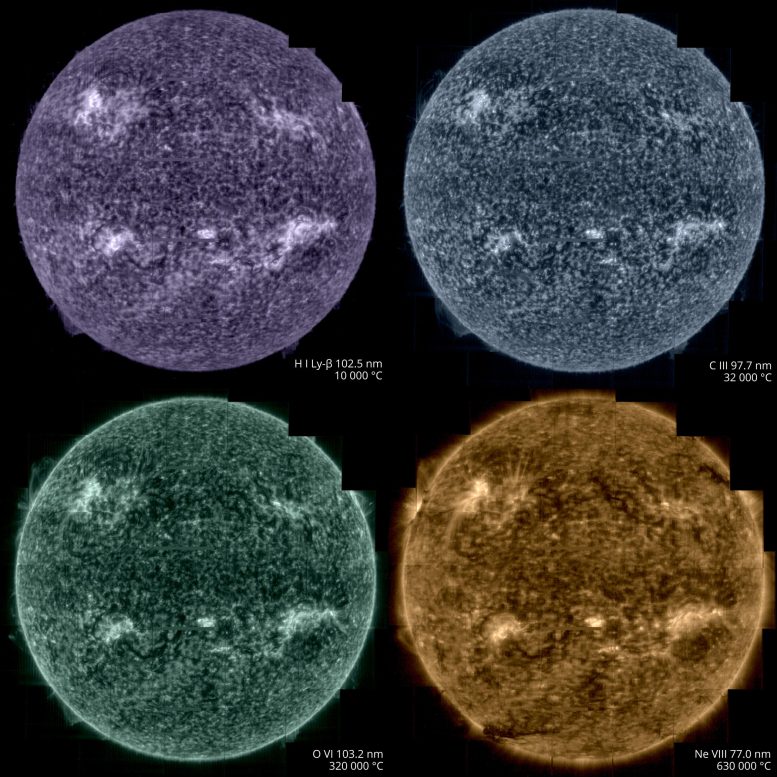
Solar Orbiter took images of the Sun on March 7, from a distance of roughly 75 million kilometres, using its Spectral Imaging of the Coronal Environment (SPICE) instrument. SPICE takes simultaneous “spectral images” at several different wavelengths of the extreme ultraviolet spectrum by scanning its spectrometer slit across a region on the Sun. The different wavelengths recorded correspond to different layers in the Sun’s lower atmosphere. Purple corresponds to hydrogen gas at a temperature of 10,000°C, blue to carbon at 32,000°C, green to oxygen at 320,000°C, yellow to neon at 630,000°C. Each full-Sun image is made up of a mosaic of 25 individual scans. It represents the best full Sun image taken at the Lyman beta wavelength of ultraviolet light that is emitted by hydrogen gas. Credit: ESA & NASA/Solar Orbiter/SPICE team; Data processing: G. Pelouze (IAS)
At the 2 o’clock (near the image of the Earth for scale) and 8 o’clock positions on the edges of the Sun, dark filaments can be seen projecting away from the surface. These ‘prominences’ are prone to erupt, throwing huge quantities of coronal gas into space and creating ‘space weather’ storms.
In addition to EUI, the SPICE instrument was also recording data during the crossing. These too needed to be pieced together as a mosaic.
SPICE is designed to trace the layers in the Sun’s atmosphere from the corona, down to a layer known as the chromosphere, getting closer to the surface. The instrument does this by looking at the different wavelengths of extreme ultraviolet light that come from different atoms.
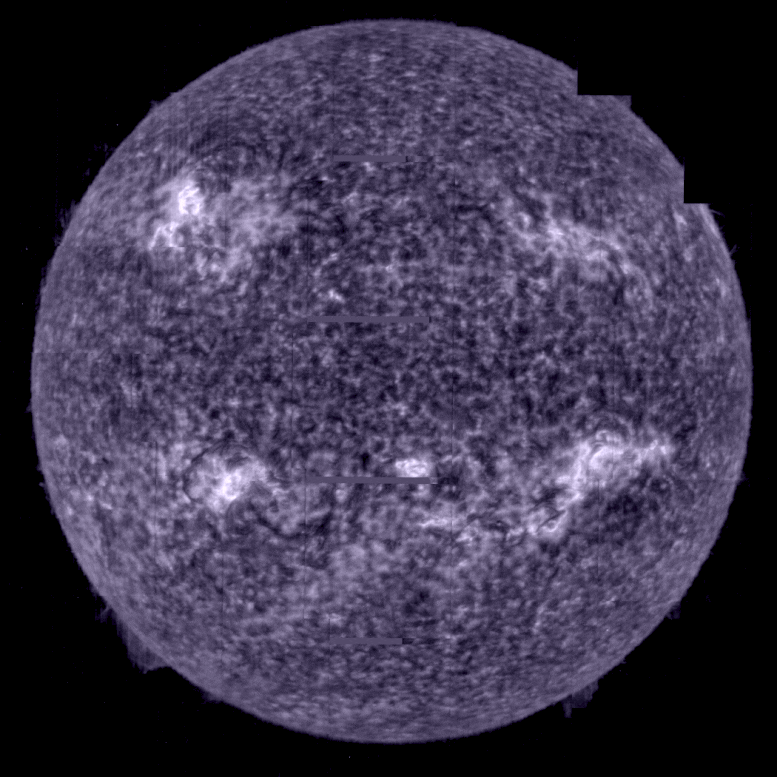
Taking the Sun’s temperature. Credit: ESA & NASA/Solar Orbiter/SPICE team; Data processing: G. Pelouze (IAS)
In the SPICE sequence of images purple corresponds to hydrogen gas at a temperature of 10,000°C, blue to carbon at 32,000°C, green to oxygen at 320,000°C, yellow to neon at 630,000°C.
This will allow solar physicists to trace the extraordinarily powerful eruptions that take place in the corona down through the lower atmospheric layers. It will also allow them to study one of the most puzzling observations about the Sun: how the temperature is rising through the ascending atmospheric layers.
Usually the temperature drops as you move away from a hot object. But above the Sun, the corona reaches a million degrees Celsius whereas the surface is only about 5000°C. Investigating this mystery is one of the key scientific objectives of Solar Orbiter.
The images were taken on 7 March, precisely when Solar Orbiter crossed the Sun-Earth line, so the images can be compared with Earth-bound solar instruments and cross-calibrated. This will make it easier to compare results from different instruments and observatories in future.
On March 26, Solar Orbiter reaches another mission milestone: its first close perihelion. The spacecraft is now inside the orbit of Mercury, the inner planet, taking the highest resolution images of the Sun it can take. It is also recording data on the solar wind of particles that flows outwards from the Sun.
And this is just the start, over the coming years the spacecraft will repeatedly fly this close to the Sun. It will also gradually raise its orientation to view the Sun’s previously unobserved polar regions.
Solar Orbiter is a space mission of international collaboration between ESA and NASA.

„Mândru pasionat al rețelelor sociale. Savant web fără scuze. Guru al internetului. Pasionat de muzică de-o viață. Specialist în călătorii.”

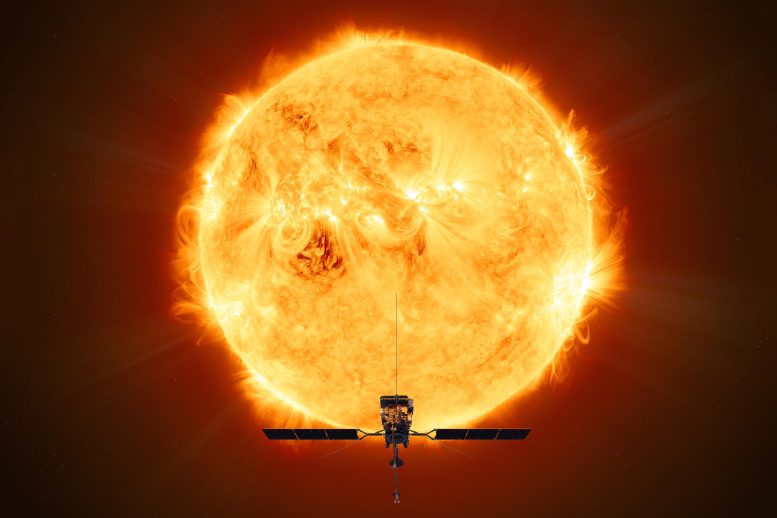



More Stories
Județul Los Angeles a raportat un caz de hepatită A la un Beverly Hills Whole Foods
Mars Rover al NASA urmează calea a ceea ce pare a fi un râu antic
Noua tehnologie solară transformă gazele cu efect de seră în combustibili valoroși